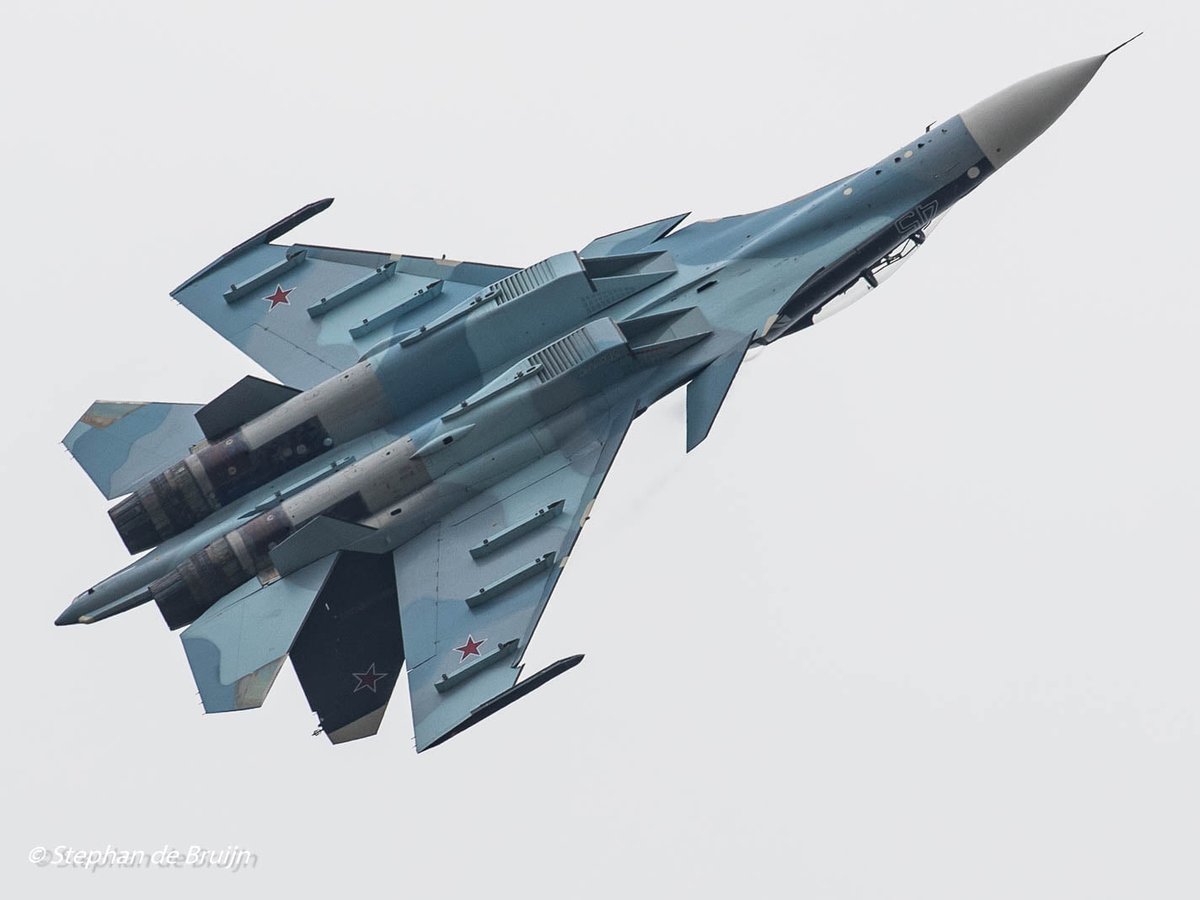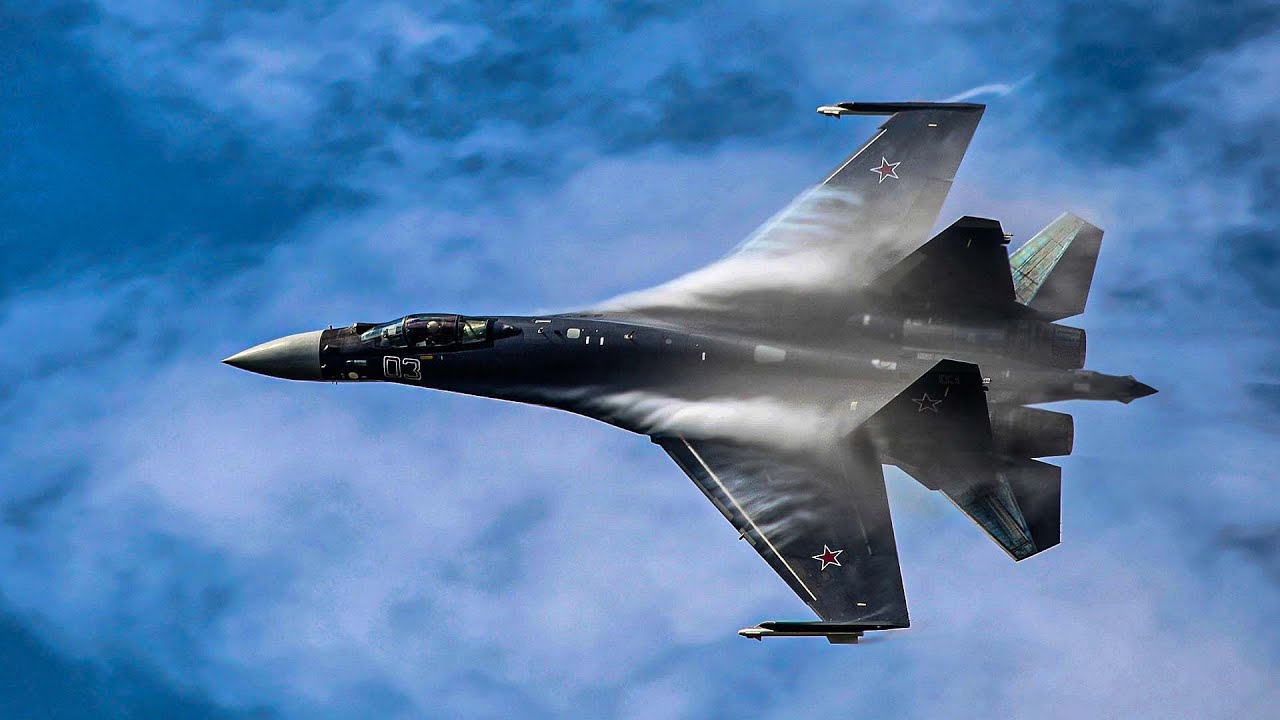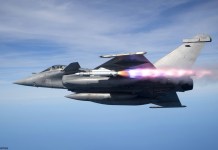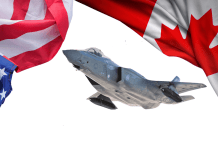After recording a significant combat loss in the air, the Russian Air Force has decided to integrate one of its most advanced heavy-duty fighter jets into its aggressor squadron.
Russia’s ‘Nuclear Drone’ Test: Rattled US-Led NATO Is Making Mushroom Clouds Out Of A Molehill!
Japan Eyes $279B In Defense Spending; Could Surpass Russia & India To Emerge 3rd Biggest Global Military Power
The Russian aggressor squadron recently received its first Su-35S Flanker-Ms, the most sophisticated fighter jets in frontline service with the Russian Aerospace Forces (VKS). The Su-35S would now be expected to assist in improving the combat capability of the Russian Air Force with no end to the Ukrainian conflict in sight.
On September 9, three newly constructed Su-35S aircraft departed the Sukhoi manufacturing unit, or KnAAPO, in the Russian Far East city of Komsomolsk-on-Amur. After three layovers and a flight of about 3,850 miles the following day, they landed at Privolzhsky in the Astrakhan region of southern Russia, War Zone reported.
Su-35S is the top-of-the-line Flanker variant from Russia that has an upgraded AL-41F1S engine providing about 32,000 pounds of thrust apiece, a computerized fly-by-wire flight control system, and three-dimensional thrust vectoring nozzles.

While very little information is available about Russia’s aggressor squadron, these squadron units are generally trained to act as the opposing force. Aggressor squadrons simulate air warfare by using enemy tactics, techniques, and procedures rather than training against one’s force.
The concept of the Aggressor Squadron is very popular with the US Air Force and dates back to the Cold War era between the US and the erstwhile USSR.
Threatened by the expansion of China’s J-20 fighter in the Indo-Pacific, the USAF activated 65th Aggressor Squadron (AGRS) at Nellis Air Force Base in Nevada earlier this year. The squadron will fly F-35A fighters and mimic the Chinese Mighty Dragons.
‘A Hell Of A Fighter’ – Why India’s Joint Collaboration With Egypt Failed To Develop A Supersonic Warplane – The Helwan 300?
China Follows Russia’s ‘Nuke Threat’; Flashes Its Carrier Killer Nuclear Missiles Amid Tensions With The US
As for Russia, Privolzhsky Air Base near Astrakhan is home to the 185th Combat Training and Combat Application Center of the Aerospace Forces. This formation simulates combat situations to give pilots and other air defense units genuine training in combat tactics.
The 116th Combat Application Training Center of Fighter Aviation, also known as the Russian “aggressor squadron,” is the center’s air component.
Russia first established an Aggressor unit to take on the challenge posed by F-15 Eagles deployed by the US and Japan.
Soviet pilots would fly MiG-29 Fulcrum fourth-generation fighters to simulate the capabilities of the F-15 in combat – allowing other units to gain experience against them and develop suitable tactics. Not too long ago, the 116th squadron received MiG-29SMT Fulcrum fighters.

The addition of Su-35S Flankers-M’s to the aggressor squadron is significant as it comes when Ukraine has applied for NATO membership. It has been concurrently appealing to the West for advanced fighter jets like the F-16s and F/A-18 Super Hornets to take on the Russian Air Force in air combat.
When asked how the presence of Su-35S in the Aggressor squadron changed things for VKS, Philippines-based military analyst Miguel Miranda told EurAsian Times: “It’s doubtful there will be any large air battles in Ukraine this year or next. The Su-35S is simply the primary fighter jet of the Russian air force, and these will be deployed in combat as needed. There’s still a Russian presence in Syria whose mission is to protect the country from the last vestiges of the rebellion.
Russia’s Aggressors Ready For Combat
To expose pilots to advanced training, Aggressor squadrons frequently employ aircraft, systems, and operators that provide accurate aerial demonstrations of probable adversary tools, techniques, and equipment. These units prepare frontline pilots for the encounters they would experience in actual aerial battles.
Two squadrons of MiG-29SMT fighters are currently stationed at the Privolzhsky base, with the first MiG-29 Fulcrum-series aircraft arriving here in 1989. It is unknown whether any aircraft or crew from this squadron has been deployed to the frontlines against Ukraine.
However, MiGs and their pilots were sent to Syria in the fall of 2017 to participate in the Russian campaign.
On being asked how the inclusion of the aircraft would boost the combat capability of the Russian Air Force, Indian Air Force veteran Squadron Leader Vijainder K. Thakur (retd) told EurAsian Times, “Air Forces usually have a flying establishment that develops combat tactics on a continual basis.
Ground attack and air combat tactics can change with the advent of new weapon systems, sensors, or adversary tactics. Compared to the MiG-29SMT, the Su-35S is a significantly more advanced fighter with more capable sensors & weapon systems.
The Russian Airforce will need to develop air combat tactics to optimally utilize the aircraft against adversary threats that it will likely encounter. Additionally, Russian Air Force MiG-29 and Su-30 fighters would need to develop tactics to hold their own against a fighter with Su-35 capabilities.”
However, the veteran does not think the inclusion of the Su-35S in the Aggressor Squadron was related to the Ukraine war. He said, “I don’t believe the induction of the Su-35S into 185th Combat Training, and Combat Application Center of the Aerospace Forces was prompted by the Russian SMO in Ukraine.
However, in the long run, it would certainly be used to develop tactics suited to the dissimilar type of combat. So yes, it will help the Russian Air Force perform better if the SMO is drawn out and Ukraine gets Wester fighters such as F/A-18 or F-16.
Besides the Aggressor fighter jets, the 67th Firing Range, the 42nd Surface-to-Air Missile Training Center, radar and radio units, launch sites, and control stations for aerial targets, among other things, are all under the jurisdiction of the 185th Center at Ashuluk (Tambovka), 80 miles north of Astrakhan.
This is the first time the Su-35S Flanker-Ms will become part of the squadron. Two Eastern Military District regiments and two Western Military District are currently equipped with Su-35S fighters. The Su-35S, which possesses 3D thrust-vectoring capabilities, has long been noted for its mobility.
Su-35S has taken the stage since the Russian invasion was launched, serving in both air defense and offensive air-to-ground missions. The offensive air-to-ground missions have included anti-radiation Kh-31P series (AS-17 Krypton) missile-equipped suppression of enemy air defenses (SEAD) operations. The UPAB-1500B glide bomb and other large standoff weapons have also been used in air-to-ground missions.

Su-35S fighters operating in the air-to-air role during the conflict in Ukraine are equipped with a variety of weapons, including the medium-range R-27 (AA-10 Alamo), active radar-guided R-77-1 (AA-12 Adder), and short-range R-73/74 (AA-11 Archer) missiles. Other times, Su-35S planes have been set up to perform air-to-air and anti-radar operations simultaneously.
It is noteworthy that the Ukrainian Air Force put in a lot of preparation work against Su-35S and Su-30SM threats before the current battle. The California Air National Guard’s F-15Cs replicated the strategies and performance of these advanced Russian Flankers as part of training with the US Air Force, especially the Clear Sky maneuvers.
The Sukhoi Su-35S carries a 30mm cannon, has 12 hardpoints, and can detect targets at more than 400 kilometers, while its radar can track up to 30 targets simultaneously.
The fighter has a range in excess of 3,500 kilometers without refueling. The standout characteristics of the world’s most powerful Fourth-Generation fighter include new engines, avionics, and radar, according to Rostec.
The new jet’s avionics are an entirely new set of onboard electronics. All of the Sukhoi Su-35’s electronics are combined into a single system.
The Su-35 aircraft, in general, exhibits the qualities of a cutting-edge fighter and a suitable tactical aircraft. This includes the capacity to control combat group actions, superb active and passive acquisition aids, high supersonic speed and long range, a state-of-the-art electronic system, and a small radar signature.
- Contact the author at sakshi.tiwari9555@gmail.com
- Follow EurAsian Times on Google News




